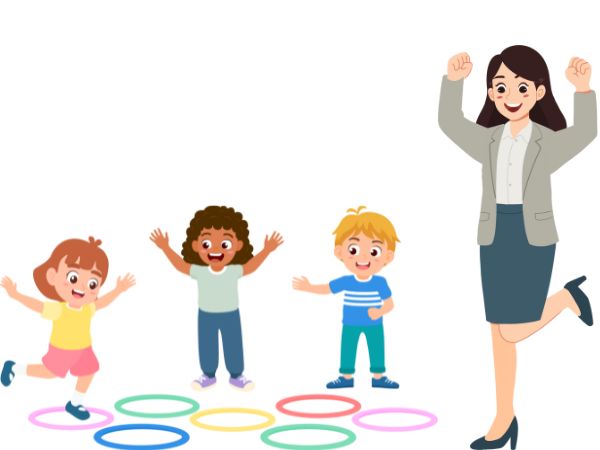The Classroom That Grew Hope
Ms. Stella stood at the edge of her playground before morning assembly. A fresh breeze whispered through the trees, stirring an idea in her heart.
“Class,” she announced, “today we’ll plant hope.”
She led her 7th graders outside. For the first five minutes, they danced, hopped, and laughed—feet stomping like joyful drums. When they re-entered, the air buzzed with energy.
“What just happened?” she asked, eyes sparkling.
One student shrugged. Another giggled.

Ms. Stella explained: ‘Your muscles just released hope molecules—called myokines. They traveled through your bloodstream, crossed into your brain, and uplifted your mood. That’s why you feel lighter and sharper right now.’
She continued, ‘And that’s not all. As you moved, your body also released dopamine—the ‘feel-good’ chemical of reward and motivation—and serotonin, which boosts your mood and helps you feel calm and regulated.’
Later, a timid student raised his hand. ‘Ma’am, if movement brings hope, will team projects or praising classmates do the same?’
“Absolutely,” she nodded. “That’s social connection and kindness at work—they too spark hope molecules. Sharing, caring, and laughing with others triggers these chemicals and builds resilience.”
At day’s end, the class seemed brighter—not just outside, but within their hearts. Ms. Stella knew they hadn’t just moved—they had sparked little sparks of hope that might last long after the bell.
Teacher’s Quick Reference: Understanding & Using Hope Molecules
Concept | Details for the Classroom |
Hope Molecules | Myokines (exercise-released proteins) boost brain function and mood. |
Key Neurotransmitters | Dopamine (reward & motivation), Serotonin (mood regulation), Oxytocin (trust & connection), Endorphins (stress relief through movement/pleasure). |
Classroom Activities to Trigger Them | – Morning movement: quick dance or stretch break |
Why It’s Effective | – Improves focus and collective energy |
Further Reading & References
Hope Molecules Concept
Arnett, S. V., & Clark, I. A. (2012). Molecular mechanisms of exercise-induced neuroprotection in the brain: The roles of cytokines and neurotrophic factors. Frontiers in Neuroendocrinology, 33(2), 105–116.
👉 Introduces how physical activity releases “myokines” (like irisin) from muscles, which influence brain health — the science behind “hope molecules.”
Exercise and Brain Health
Ratey, J. J., & Loehr, J. E. (2011). The positive impact of physical activity on cognition during adulthood: A review of underlying mechanisms, evidence, and recommendations. Reviews in the Neurosciences, 22(2), 171–185.
👉 Explains how even short bursts of movement improve mood, reduce anxiety, and sharpen focus — essential for teachers to know.
Classroom Application of Movement
Mahar, M. T., Murphy, S. K., Rowe, D. A., Golden, J., Shields, A. T., & Raedeke, T. D. (2006). Effects of a classroom-based program on physical activity and on-task behavior. Medicine & Science in Sports & Exercise, 38(12), 2086–2094.
👉 Found that 10-minute classroom activity breaks improved students’ attention and engagement.
Hope and Student Learning
Snyder, C. R., Lopez, S. J., Shorey, H. S., Rand, K. L., & Feldman, D. B. (2003). Hope theory, measurements, and applications to school psychology. School Psychology Quarterly, 18(2), 122–139.
👉 Shows how cultivating hope in students correlates with better learning outcomes and resilience.
Popular Explanation (for teachers’ easy reference)
FHE Health. (2023). Hope Molecules: The Science of Exercise and Mental Health. Retrieved from: https://fherehab.com/learning/hope-molecules
👉 A simple, accessible explanation of “hope molecules” and why movement matters for mental health.
Want to transform your school too? Bring the power of new-age teaching & learning.
Contact us to revolutionize your school’s teaching approach today!
In service since: 2010.
